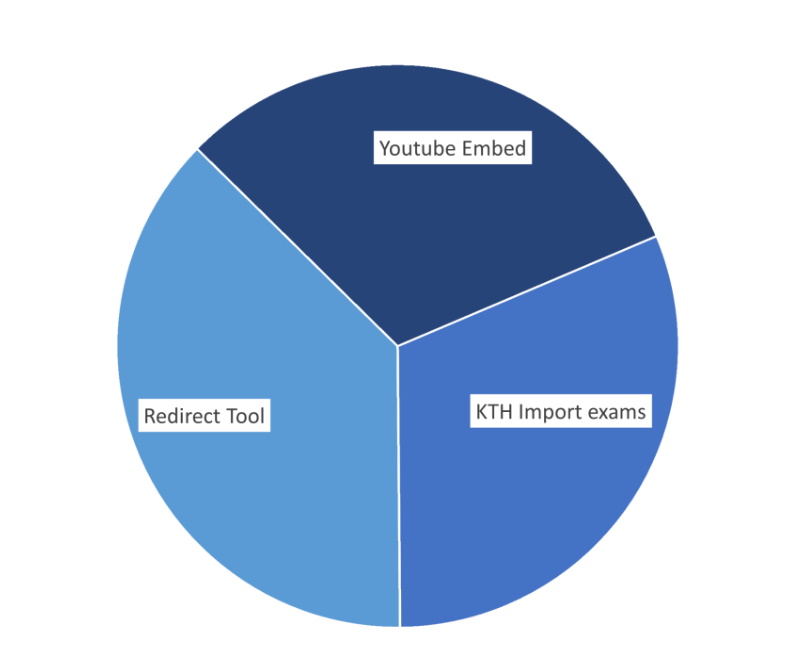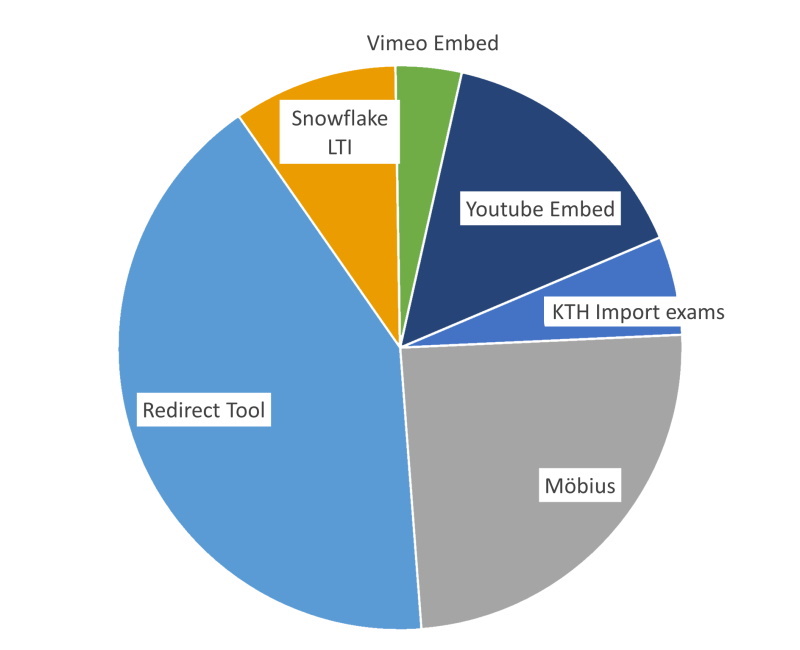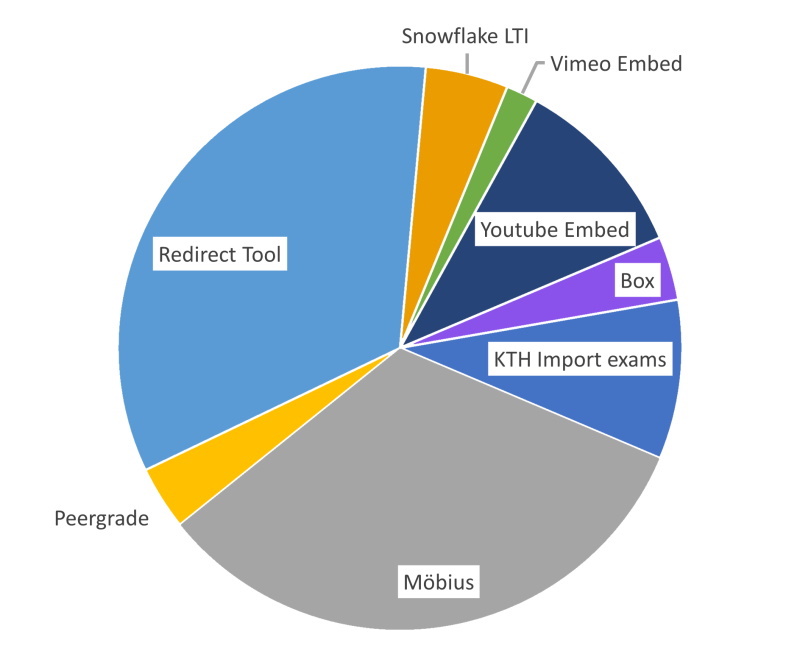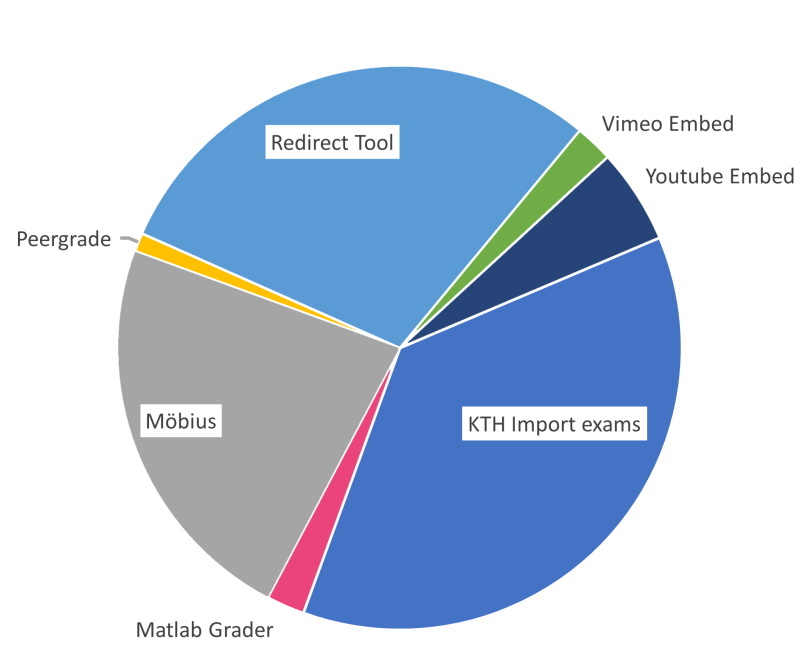2022: E-learning in figures
Here you can find numbers and statistics for 2022 usage of the systems that are maintained by the E-learning object. E-learning is continuously using data driven development and the figures presented here are only a selection of the data that decisions are based upon.
Course rooms in Canvas
Course rooms in Canvas are created automatically for every course run, but they are unpublished when created. It is the teacher of the course that actively has to choose to publish the course room and make it available for the students.
The statistics are divided into the number of course rooms that are created, published and contentfull. "Contentfull" indicates courses where the sum of the number of assignments, modules and quizzes are more than 3.
Note! The statistics was updated 2025 as a new, more secure method could be used to collect and manage the data.
| School | Created | Published | Contentfull |
|---|---|---|---|
| ABE | 489 | 351 | 295 |
| CBH | 489 | 272 | 240 |
| EECS | 443 | 311 | 290 |
| ITM | 715 | 493 | 443 |
| SCI | 351 | 230 | 181 |
Course surveys (LEQ)
Students must be given the possibility to give their feedback and suggestions on the course design and implementation. Course surveys using LEQ are created on the initiative from the teachers in the course but they can also perform a survey using pen and paper or other tools for collecting the feedback from the students.
Total number of course surveys with LEQ: 1142.
The number of course surveys is similar to the previous year, but the response rate has declined across all schools.
| School | Number of surveys | Number of survey invitations sent out | Response rate % |
|---|---|---|---|
| ABE | 237 | 14542 | 16.0 |
| CBH | 142 | 8711 | 17.9 |
| EECS | 260 | 21898 | 16.8 |
| ITM | 329 | 16337 | 17.1 |
| SCI | 174 | 14080 | 14.2 |
Diagram: course surveys per school
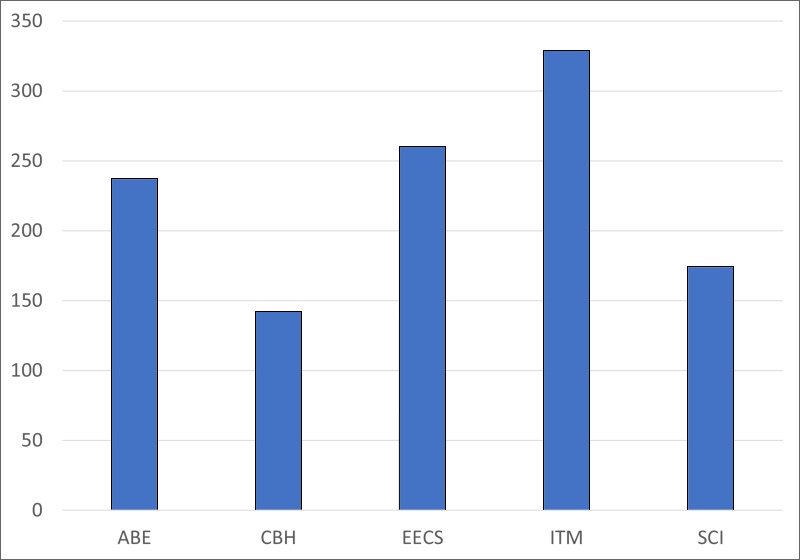
Diagram: response rate per school
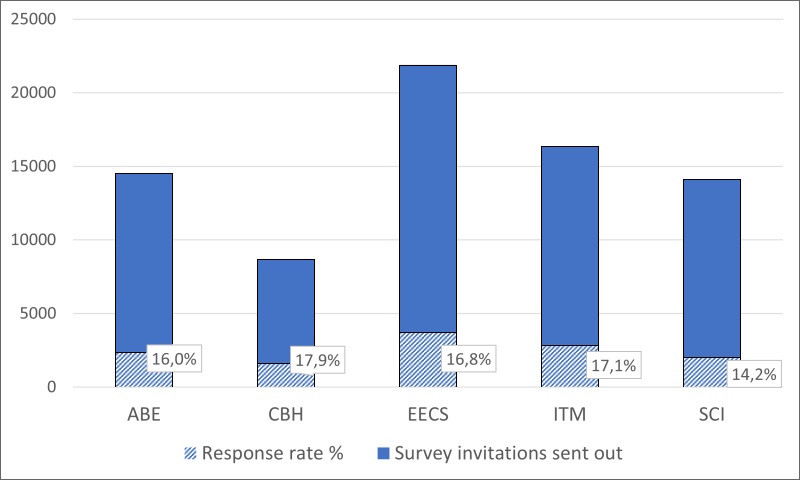
External applications (LTI-apps) in Canvas
KTH provides a number of external applications, known as LTI-apps, as a complement and extension to Canvas. KTH also provides support on a few LTI apps: Kaltura (KTH Play), Möbius and KTH Import exams.
There are licenses for Möbius, but they must be requested. The remaining applications have been activated when teachers requested them. Kaltura is not included in the statistics as it is available automatically in all Canvas rooms.
| School | Box | KTH Import exams | KTH OLI | Matlab Grader | Möbius | Peergrade | Redirect | Snowflake | Vimeo embed | Youtube embed |
|---|---|---|---|---|---|---|---|---|---|---|
| ABE | 0 | 5 | 0 | 0 | 0 | 0 | 6 | 0 | 0 | 5 |
| CHB | 0 | 3 | 0 | 0 | 13 | 0 | 22 | 5 | 2 | 8 |
| EECS | 0 | 28 | 19 | 0 | 9 | 17 | 265 | 0 | 2 | 6 |
| ITM | 10 | 25 | 0 | 0 | 90 | 10 | 92 | 13 | 5 | 29 |
| SCI | 0 | 34 | 0 | 2 | 21 | 1 | 27 | 0 | 2 | 5 |
Diagram: courses per school with specific external application activated
Quizzes with Mentimeter
The Mentimeter tool is mainly used to create surveys or quizzes that can be answered online, but can also be used for presentations. The tool is an alternative to so-called clicker questions for distance and hybrid occasions, often used to see if students have understood the content.
There is a clear decline in use of Mentimeter this year as compared to last year. This decline is probably due to the decrease in distance and hybrid education after the pandemic.
Active members: 643.
Number of created quizzes and presentations: 2828.
Number of held quizzes and presentations: 1917.
Number of participants: 40 975.
Plagiarism checking with Ouriginal
Ouriginal can be used as a standalone web service as well as an integrated service in Canvas where the assignments are connected to Ouriginal. The figures here apply to both ways but where the documents checked via Canvas make up the majority and is also an increasing number.
Total documents reviewed: 78 698.
Number of users viewed document: 358.
Both the number of reviewed documents and the number of users are lower than the previous year.

